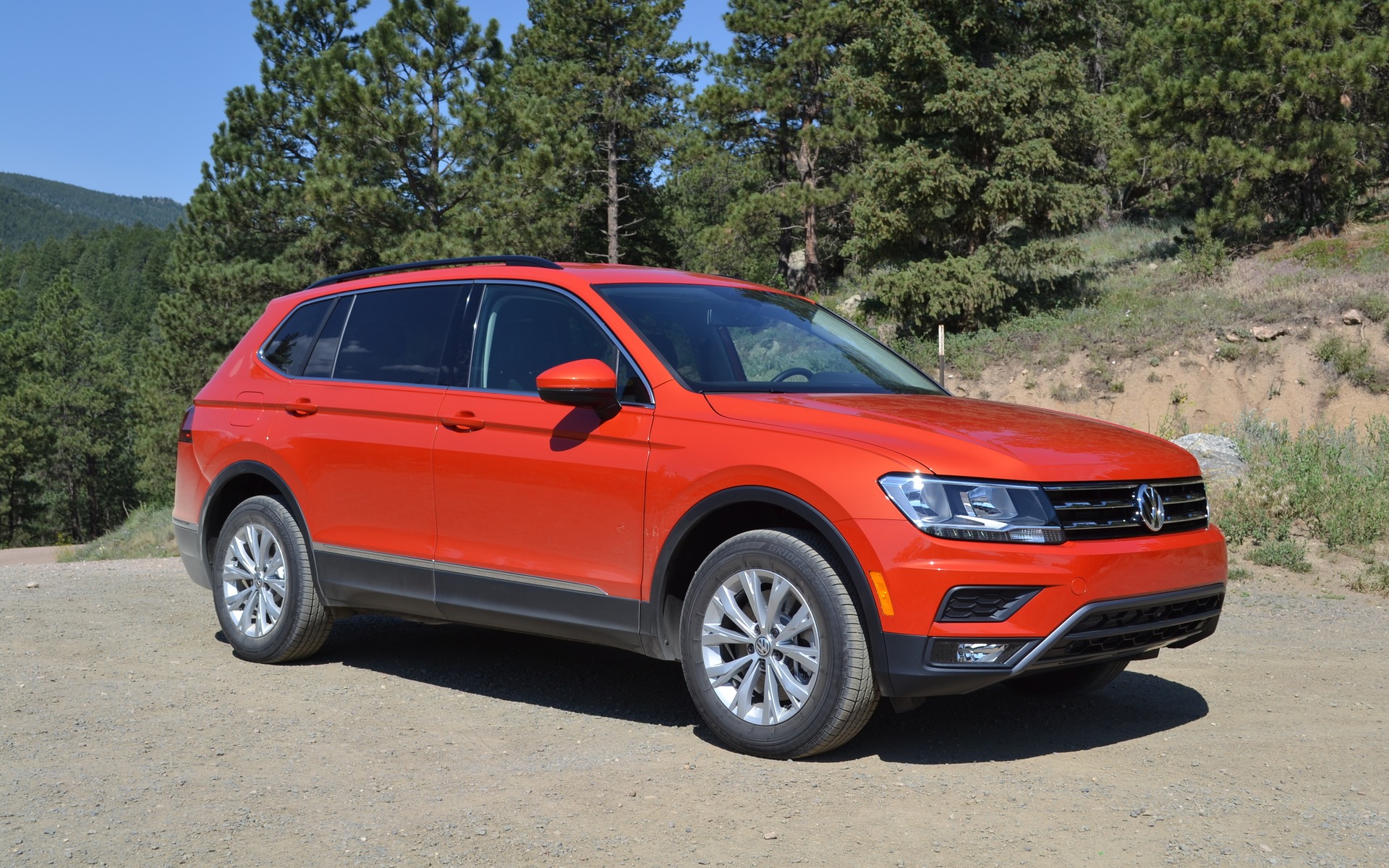2018 Volkswagen Tiguan: Seven Passengers, Three Versions, One Engine

| Strong points |
|
|---|---|
| Weak points |
|
With 68% of new vehicles sold in Canada being pickups or SUVs, it’s easy to understand why manufacturers put so much effort into developing sport utility vehicles of all shapes and sizes. Traditionally, Volkswagen hasn’t been a major player in this segment, but it’s hoping to make up for lost time with the back-to-back launches of the Atlas, a midsize SUV, and its newly updated compact SUV, the 2018 Tiguan.
Supersize me
The second-generation Tiguan arrives not a moment too soon. The first generation burst onto the scene more than nine years ago and, in such a competitive market, nine years is an eternity. This is not the Tiguan you’re used to. Not only does it have the new MBQ platform—the very same one as the Atlas and the Golf—but, at 268 mm longer, 30 mm wider, and 86 mm more in the wheelbase, it is significantly bigger. This increased size allowed the engineers to give it a third bench and sends it to the top of the lineup in terms of size.
- Also: Volkswagen T-Roc: A New Player in the Subcompact SUV Market?
- Also: What to Expect From the 2022 Volkswagen Tiguan
This Tiguan seats seven, but let’s be realistic, the third row won’t be comfortable for adults on long trips. It’ll be handy in pinch though, particularly to transport your kids’ friends, or perhaps an adult you hate. It comes on option on all trims.
In keeping with the brand’s recent product style, the 2018 Tiguan features more angular lines than in the past. Its style remains pretty generic, but we understand that Volkswagen wants to appeal to the masses. However, its lower roofline, increased width and attractive 17-inch rims (18- and 19-inch rims are optional) give it a little more personality. And it boasts a few more vibrant body colours, too.

More family-friendly
Inside, the dashboard layout is very subdued, but it’s functional and easy to use. The instrumentation is classic with a rev counter on the left, a speedometer on the right, and, in the middle, a multifunction display showing information from the on-board computer. You can’t miss the eight-inch infotainment touch screen in the middle of the dashboard (6.5 inches in the basic Tiguan). It controls numerous things, but does as it pleases if by chance you graze it accidentally.
The Tiguan is more family-oriented, as all the occupants are treated to a little more room, especially for the legs, while the passengers in the back will be able to recline their seats for more comfort. The loading capacity is 58% bigger so you can haul more cargo. Of course, the third-row bench will eat into this space—after all, the Tiguan is still a compact SUV.
A new drivetrain
The Tiguan’s turbocharged and direct-injected, 2.0-litre four-cylinder engine is brand new and develops 184 horsepower and 221 lb.-ft. of torque. It’s paired with the only available transmission, an eight-speed automatic. What’s unique about this engine is its Budack cycle. Similar to the Atkinson cycle, this technology helps enhance power while maximizing fuel economy by changing the valve timing depending on rpm and engine load. This engine delivers less power than the previous one, but more torque. Fortunately, it runs on regular unleaded.
The meager 1500-pound towing capacity was a disappointment, but that’s par for the course with modern SUVs built on a chassis that’s not suitable for the task and whose engines are just getting smaller and smaller.

We were lucky enough to test drive the Tiguan in and around Denver, Colorado. The comfort and, especially, the quiet ride were immediately obvious. The cabin did a good job of keeping out ambient noise, including engine noise, which is no easy task when you push the engine to the limit. We didn’t like the electronic accelerator as it isn’t precise and lags, particularly when the vehicle is stopped or moving slowly. It takes some getting used to.
The steering is better. Always precise, it makes you feel like you’re in control. On the road, we found the power barely sufficient, but you have to keep in mind that we were at an altitude of over 8000 feet in some places. Although the turbocharger made up for the low air density, pushing the Tiguan any more would have put an enormous strain on the engine. Back home, the effect should be much less noticeable.
The Volkswagen Tiguan will come in three versions: Trendline, Comfortline and Highline. The prices will be unveiled shortly, but you can expect a basic version with all-wheel drive to run you slightly less than $30,000. The vehicle will be available in dealerships towards the end of August.











